
THE BUSINESS OF UX
Everything you need to know to start and run your own freelance UX business or consultancy.
Hi folks. Eli and Joe Natoli here, husband and wife — and business partners for the last 12 years. We designed this course to tell you everything you ever wanted to know about making the leap from employee to entrepreneur.
Whether that means a solo gig as a freelancer or consultant, or starting your own company with employees, we’re going to walk you through every single thing you need to do and consider in order to succeed and grow.
We've both been self-employed for the majority of our careers, both independently with our own consulting businesses and, as many of you know, together as partners. We continue to do both, and the wonderful thing about that kind of longevity is that you learn an awful lot about what works and what doesn’t.
So we designed this course to be full-blown, all-out comprehensive; no stone unturned. We'll share everything we know about building and maintaining a successful career, especially through the challenges, struggles and low times. Which we’ve had more than our share of ;-)
Successful entrepreneurs have a clear plan of action, a strategy for everything they do inside and outside of their business.
The work of creating products and services, driving traffic, gaining subscribers, creating a sales funnel — have to walk hand-in-hand with strategy in order for a business to achieve any measure of true, sustainable momentum.
The mistake most people make — which is the same one we made — is jumping right into the tactical stuff, creating and selling services, as the first step in their online business journey! This only guarantees that they’re doing the wrong things for the wrong reasons.
No list of tactical activities is worth doing unless they are born from a clear, thorough strategy that’s already in place. That strategy is exactly what we’re going to give you here.
And the thing about starting and running your own business is that the vast majority of the advice out there in books, courses and videos focuses on a one-size-fits-all approach that in many ways is irrelevant to a career in UX or Design.
The focus tends to be on the tactical rather than the strategic, and too much of this stuff is written in dense business-speak that requires a ton of effort to decipher, much less implement. So if you feel unequipped to make this leap, we want you to understand that there’s a reason for that, and this is a big part of it.
The other reason so many designers and UXers don’t know where to start — in terms of working for themselves — is because art, design and UX programs do very little to impart a healthy respect for business (and businesspeople). Most programs almost seem to go out of their way to teach and encourage an us vs. them mentality, a suspicion and mistrust of executives and stakeholders, painting them as barbarians who only care about the bottom line.
And far too many online articles, videos and social media commentary created by UXers and Designers perpetuate that myth.
Of combat instead of collaboration.
The work is hard — but the rewards are great.
No part of working for yourself in any way is easy. It’s not ever going to be and you shouldn’t expect it to be. But as Joe has said many times before, the only thing that is ever going to stop you…is you.
We are living proof of that — and we are here to give you everything we know about starting, building and running a successful business.
As you'll see, we've left no stone unturned here. And everything we'll give you here didn't come from empty academic theory — it came from hard-knock experience with what works and what doesn't.
You can do this — but you've got to proceed with both eyes fully open. Our purpose here is to help you do exactly that.
71 Lessons
Already Joined? Login
1.0 Upfront legwork: what you must consider

Introduction: we did it — and you can too.

1.1 Reasons to Do It

1.2 Reasons NOT to Do It

1.3 Self-Test: Is self-employment right for you?

1.4 Planning, Part 1: Money and Sacrifices

1.5 Planning Part 2: Hats to wear and truths to accept

1.6 What You'll Need, Part 1: Budgeting + legal help

1.7 What You'll Need, Part 2: Bookkeeping, accounting, banking + payroll help

1.8 What's in a name...and what's your BIG WHY?
2.0 Transitioning from your 9 to 5: things to consider

2.1 Freelancing vs. Entrepreneurship: Which is right for you?

2.2 Creating a realistic plan of action

2.3 Think progress, not perfection

2.4 Choosing the right business model: what are you really selling?

2.5 Finding and focusing on your strengths

2.6 Building strategic partnerships
3.0 Pricing, Collecting + Taxes

3.1 Ground rules - making friends with money

3.2 How much to charge, part 01
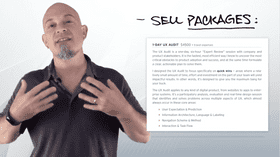
3.3 How much to charge, part 02
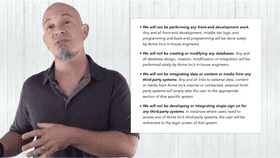
3.4 How to (and how not to) estimate work, part 01

3.5 How to (and how not to) estimate work, part 02

3.6 Negotiating price + scope with clients

3.7 Keeping more of what you make

3.8 Protecting yourself financially
4.0 Defining your audience, your approach and yourself

4.1 Evaluating Potential Clients to Target

4.2 Growing Industries to Consider, Part 1

4.3 Growing Industries to Consider, Part 2

4.4 Who are you selling to?

4.5 Should you be a Generalist?

4.6 Should you be a Specialist?
5.0 Startup Stage: What to sell, how to sell it and why clients will care (or won't)

5.1 Understanding your business' lifecycle
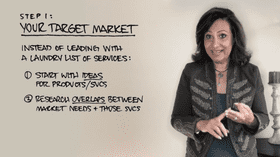
5.2 Identifying the problem potential clients need you to solve - Part 01

5.3 Identifying the problem potential clients need you to solve - Part 02
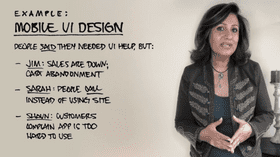
5.4 Creating buyer personas and planning offers

5.5 Finding — and clearly communicating — your differentiator

5.6 Matching your unique offer to your client's desired outcome
6.0 Positioning and communicating your services

6.1 Communicating your differentiator

6.2 Communicating what you offer on your Home page

6.3 effectively positioning your About page

6.4 Writing a persuasive sales / offer page
7.0 Promotions, Pitches, Proposals + Contracts
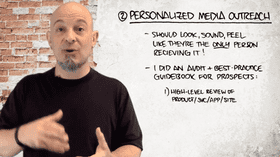
7.1 Getting seen + making contact

7.2 Networking for people who hate networking

7.3 Pitching and presenting

7.4 Anatomy of a solid proposal

7.5 Joe's Rules for contracts

7.6 Anatomy of a rock-solid contract
8.0 The Growth stage: more work, more consistently

8.1 Attracting, engaging + converting more clients

8.2 The 5-step lead generation system that WORKS

8.3 Authority: getting strategic about content
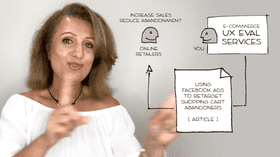
8.4 Authority: defining your content goals

8.5 Authority: Effective content types

8.6 Engagement: building your audience with Lead Magnets

8.7 Engagement: The power of a free offer — magnified

8.8 Engagement: how to present + promote your Lead Magnet

8.9 Engagement: Where to place your Lead Magnet
9.0 The Expansion Stage: Leveraging social media + email marketing to turn fans into clients

9.1. Increasing brand awareness with social media

9.2. Turning fans into clients using social media

9.3. Finding the right platform

9.4. Social media content strategy

9.5. Prospect onboarding: building your email list

9.6. Email marketing best practices

9.7. Nurturing and converting leads on autopilot
10.0 The Authority Stage: From contractor to trusted advisor

10.1 Keys to building authority : Perception, Action and Impact

10.2 Perception: matching the talk with the walk

10.3 Perception, Rule 01: Say what you mean what you say

10.4 Perception, Rule 02: Don't try to be the smartest person in the room

10.5 Perception, Rule 03: Focus all outward communication on business outcomes (not UX outcomes)

10.6 Action, Part 01: What you DO is what (and who) you ARE

10.7 Action, Part 02: True authority is built on honesty — and honor
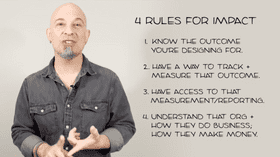
10.8 Impact: 4 Rules for doing impactful work

10.9 The impact of generosity
